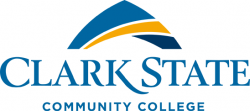
Clark State Community College has been awarded a $200,000 grant from the Ohio Department of Higher Education in order to advance collaborative research. The funds will be used for sensors and unmanned aircraft systems (UAS) for the Precision Agriculture program.
“Clark State has aggressively pursued grant opportunities that increase student success and foster collaboration with our secondary education partners, particularly in our focus area of precision agriculture,” said Dr. Jo Alice Blondin, president of Clark State. “Clark State is a pioneer in this area of study.”
“Collaboration and innovation are high priorities for Governor Kasich and for higher education in Ohio,” said Ohio Department of Higher Education Chancellor John Carey. “Agriculture is Ohio’s number one industry, so Clark State’s initiative to use technology to strengthen precision agriculture in Ohio makes sense.”
With the additional funding, Clark State will add more state-of-the-art equipment from SelectTech Geospatial Services, Headwall and USA/UAS to their already successful program. SelectTech has been a partner with Clark State since the inception of the Precision Agriculture program.
“This will allow us to broaden the physical assets to support the small UAV portion of Clark State’s efforts in precision agriculture,” said Frank Beafore, executive director of SelectTech. “SelectTech Geospatial Advanced Manufacturing Facility concentrates on custom designing and building small unmanned aircraft vehicles (UAV) for targeted applications. In the case of Clark State, we will provide fixed wing and vertical take-off aircraft and associated ground support equipment to allow Clark State to expand their program.”
Beafore said adding specialized sensors will allow students to measure an assortment of variables associated with precision agriculture. The sensors are attached to the UAS and will transmit data to ground stations where the data is recorded for analysis. The ground systems are a series of transceivers that will control the aircraft, the payload and receive information on the ground.
“We continue to look for ambitious trained technical people to fill our ranks, and I know other industries do also,” said Beafore. “That is our major objective–to work with schools to help grow talent for the future.”
The additional funding will help defray costs of training staff, faculty and students on how to interface with the Ground Based Sense and Avoid (GBSAA) system and the costs of using pilots within the system. The remainder of the funding will be spent on precision agriculture research throughout the network system.
“As a benefit to the mission, the addition of precision agriculture sensor work in the GBSAA network will benefit Clark State and the mission of the research,” said Aimee Belanger-Haas, dean of business and applied technologies at Clark State.
All Clark State Agricultureprogram students spend timeflying and processing imagery in their introductory coursewith more in-depth exposure in subsequent courses. The capstone courseprovides the students the opportunity to create their own projects and prescription maps with imagery collected in class. Additionally, Geospatial students willlearn about UASin their introductory course.
“All of the flights that have been conducted by Clark State over the past two years have gone well, and data collection is ongoing,” said Belanger-Haas. “Several students will be positively impacted by us having access to this equipment.”
Additional Clark State precision agriculture partners include Skyward LTD and 3D Aerial, both consultants from the Dayton area.

